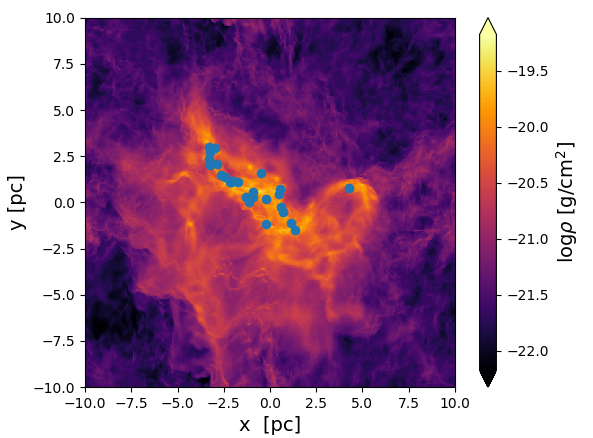| EPoS Contribution |
|
Distribution of Angular Momenta in Protostars and Their Envelopes
Aleksandra Kuznetsova U Michigan, Ann Arbor, US | |
| A testable theory of star and planet formation requires predictions of the range and relative distribution of disk properties, but the initial conditions of circumstellar disks are not well constrained. Ideally one could get the initial conditions of disks by modelling the collapse of protostars, however, as gravitational collapse covers many length scales and dynamical timescales are relatively short, top-down modeling starting from large (cluster) scales would best capture the intermediate stages leading up to disk formation and provide a set of physically motivated initial and boundary conditions for a population of protostars. We present results from a recent suite of simulations using the Athena code modeling the subvirial collapse of a molecular cloud. Using a new sink implementation for the Athena code, we can track derived quantities such as angular momenta, accretion rates, etc. for the sink particles and the surrounding cells they accrete from, allowing us to get information about the evolution of properties for the protostellar core and its envelope. | |
 | |
| Caption: Result from a sample run of Athena simulations showing the time evolution of a molecular cloud undergoing subvirial collapse and forming protostars (shown as blue markers) over the course of 2 Myr. The resulting molecular cloud forms several filaments populated with protostars (movie 7MB). | |
| Collaborators: L. Hartmann, UM-Ann Arbor, US F. Heitsch, UNC-Chapel Hill, US |
Suggested Session:
Cores |

